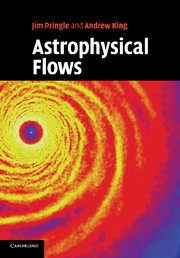Book contents
- Frontmatter
- Contents
- Preface
- 1 The basic fluid equations
- 2 Compressible media
- 3 Spherically symmetric flows
- 4 Stellar models and stellar oscillations
- 5 Stellar oscillations – waves in stratified media
- 6 Damping and excitation of stellar oscillations
- 7 Magnetic instability in a static atmosphere
- 8 Thermal instabilities
- 9 Gravitational instability
- 10 Linear shear flows
- 11 Rotating flows
- 12 Circular shear flow
- 13 Modes in rotating stars
- 14 Cylindrical shear flow-non-axisymmetric instability
- References
- Index
7 - Magnetic instability in a static atmosphere
Published online by Cambridge University Press: 05 June 2012
- Frontmatter
- Contents
- Preface
- 1 The basic fluid equations
- 2 Compressible media
- 3 Spherically symmetric flows
- 4 Stellar models and stellar oscillations
- 5 Stellar oscillations – waves in stratified media
- 6 Damping and excitation of stellar oscillations
- 7 Magnetic instability in a static atmosphere
- 8 Thermal instabilities
- 9 Gravitational instability
- 10 Linear shear flows
- 11 Rotating flows
- 12 Circular shear flow
- 13 Modes in rotating stars
- 14 Cylindrical shear flow-non-axisymmetric instability
- References
- Index
Summary
In Chapter 4 we considered the stability of a static fluid configuration against convective instabilities, or buoyancy. We found that for stability the specific entropy must increase upwards. In this chapter we again consider the stability of a static atmosphere, but with the complication of an added magnetic field. We shall find that the magnetic field can act either to stabilize or to de-stabilize the fluid. It is possible to derive a variational principle for perturbations of a fluid containing a magnetic field, just as we did for a non-magnetic fluid in Chapter 4 (see Problem 4.7.4). Of course, the expressions we would derive in doing so contain all the information required to decide stability. But we found in Chapter 4 that we had to manipulate carefully the expressions we derived in the variational principle to extract a useful stability criterion – the Schwarzschild criterion. Adding a magnetic field makes the expressions in the variational principle much more complex, simply because the geometry of the magnetic field and its interaction with the fluid add more degrees of freedom, and there is no simple stability criterion. Accordingly we adopt a simpler, less comprehensive, approach here.
There are some guiding concepts with which a theoretical astrophysicist should be familiar, and we illustrate these here. We discuss the two distinct, but often confused, modes of instability – the buoyancy instability and the Parker instability. As before we keep try to keep the situation simple, in order to bring out the physics of the situation without obscuring it in mathematical detail.
- Type
- Chapter
- Information
- Astrophysical Flows , pp. 102 - 112Publisher: Cambridge University PressPrint publication year: 2007



